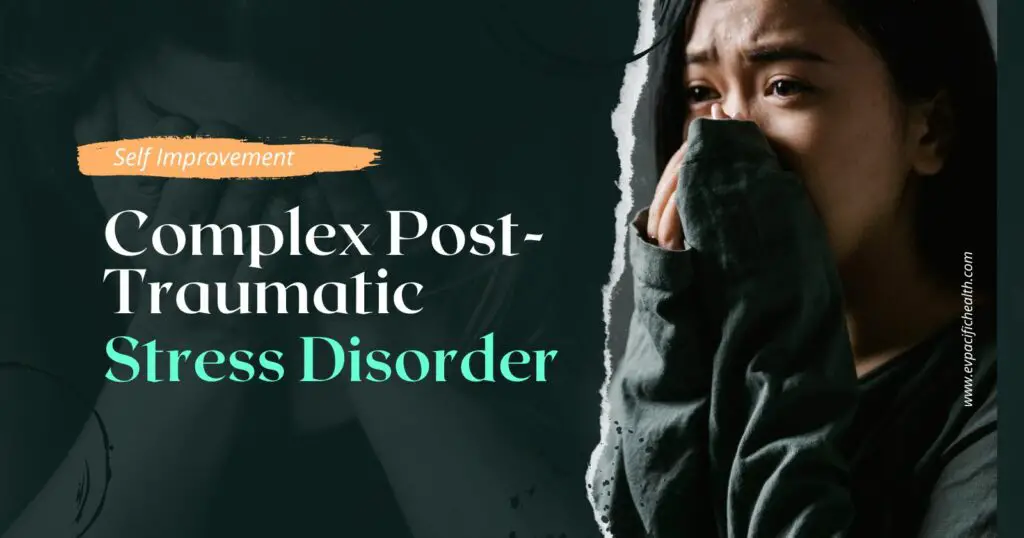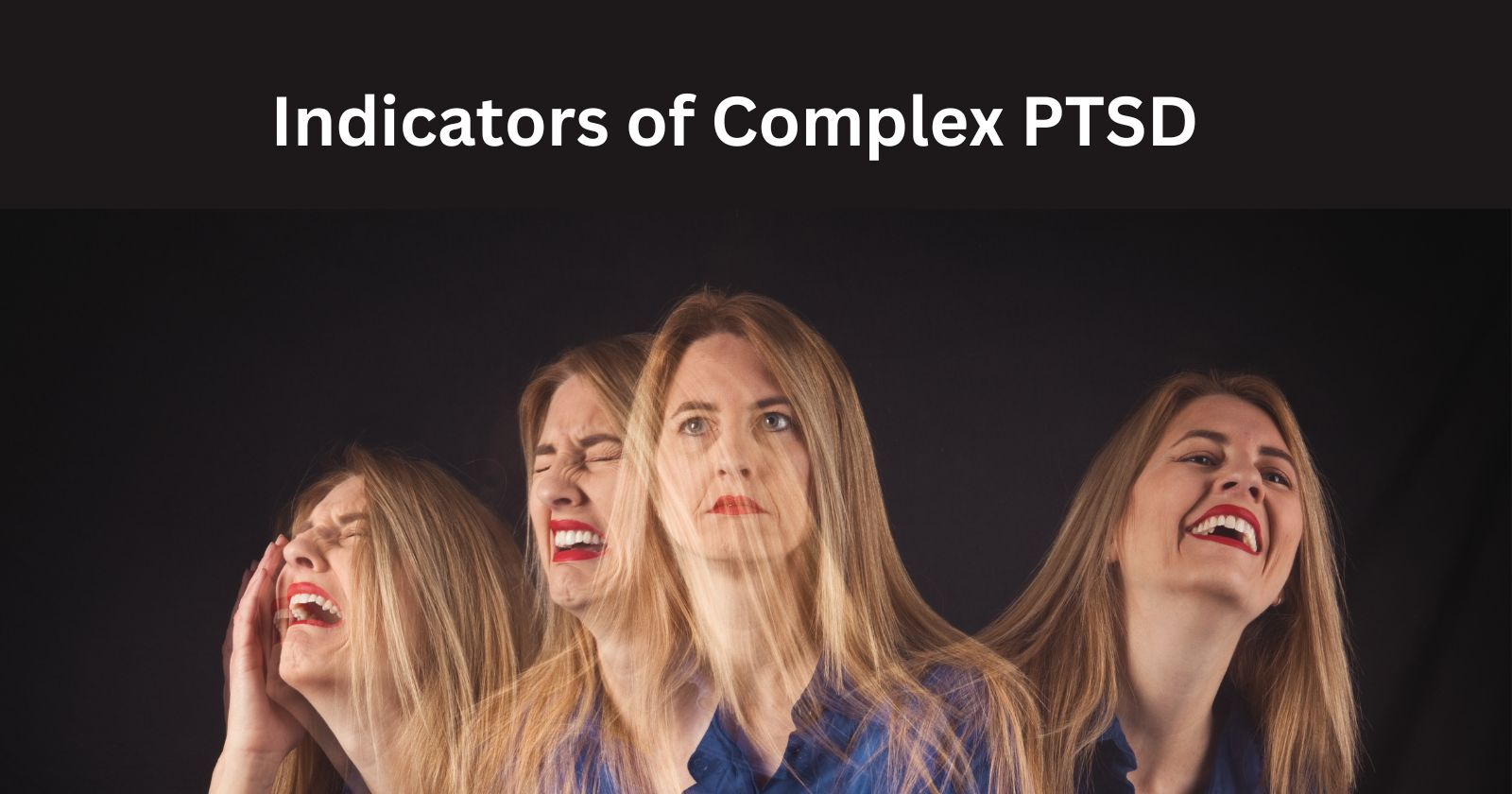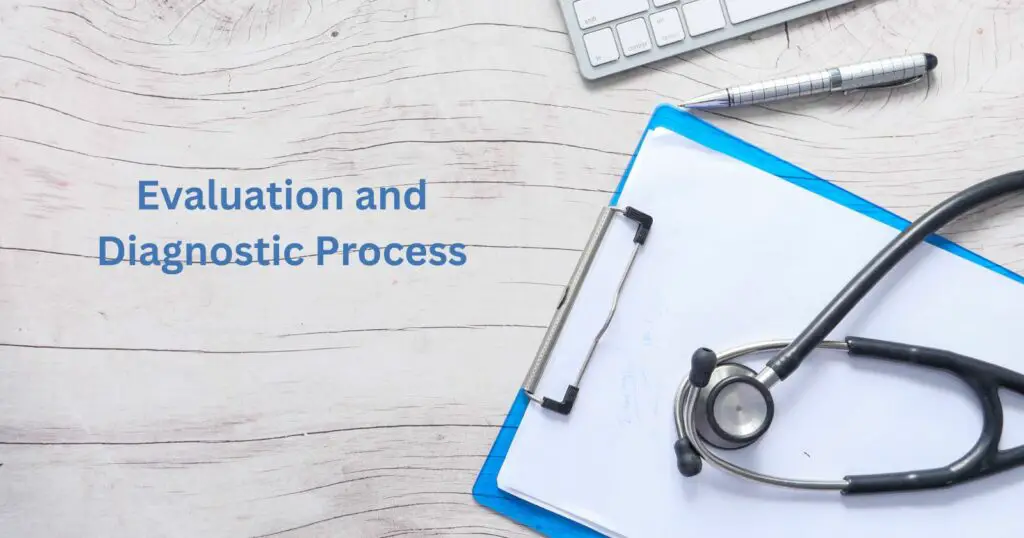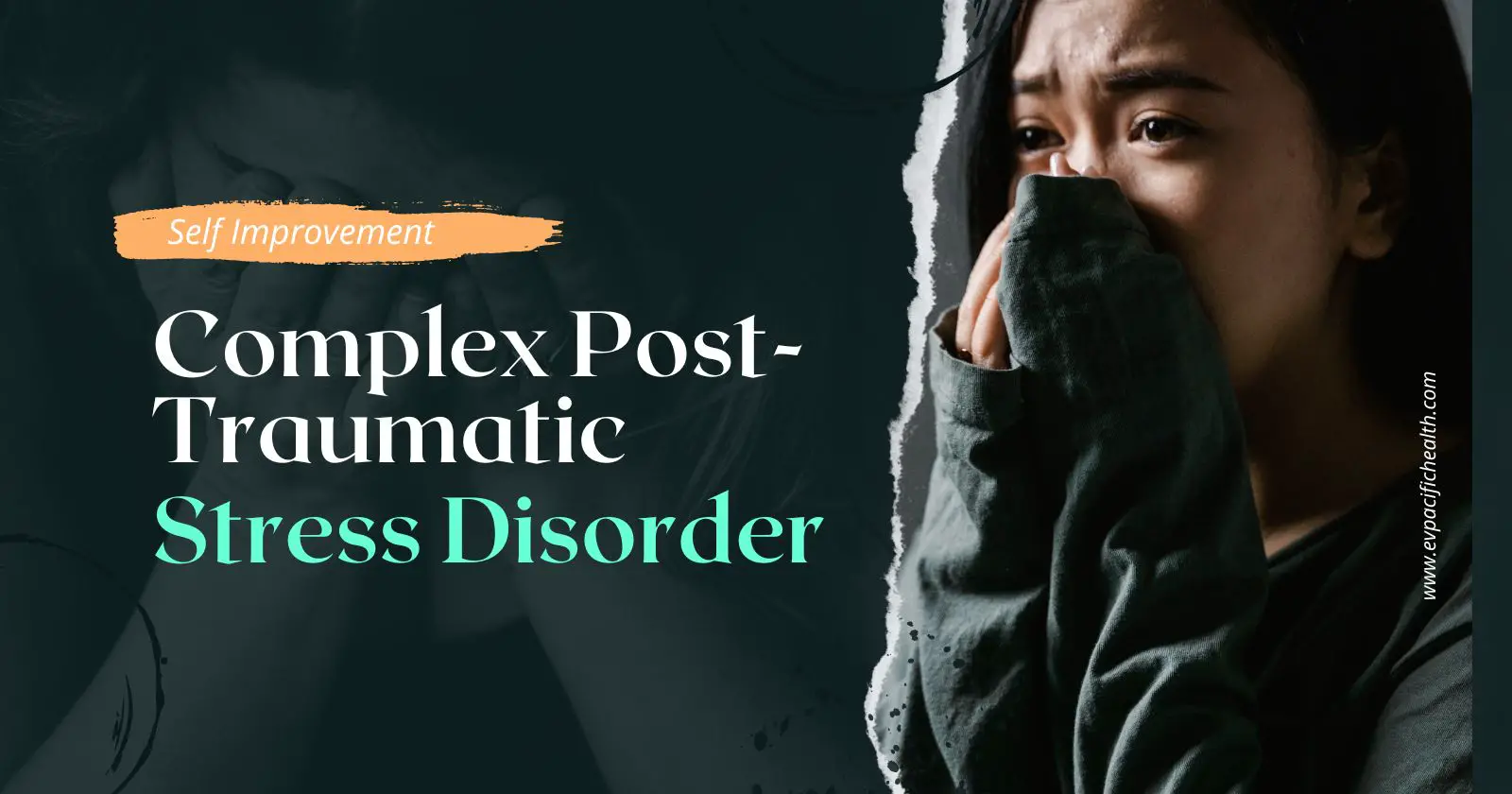Complex post-traumatic stress disorder (CPTSD) is a mental health condition that arises from long-term exposure to complex trauma histories. Unlike traditional post-traumatic stress disorder (PTSD), which typically results from a single traumatic event, CPTSD generally occurs due to prolonged or repetitive exposures to a series of distressing situations, often of sexual and physical abuse, in which an individual perceives little or no chance of escape. This distinction makes understanding and addressing CPTSD a unique challenge for individuals and professionals alike.

Symptoms of CPTSD include stress responses such as anxiety, flashbacks, nightmares, and avoidance of situations, places, or things related to the traumatic experiences. In addition to these common PTSD-based symptoms, people with CPTSD may also exhibit other emotional and behavioral features that indicate the depth of their suffering. The development of CPTSD is influenced by a combination of factors, including the severity of the trauma, inherited mental health risks, such as risk factors, such as the family history of anxiety and depression, and inherited personality traits or temperament.
As awareness of CPTSD continues to grow, so does the need for targeted treatments and support. Understanding the differences between traditional PTSD and CPTSD allows for a more accurate diagnosis and a tailored approach to care, ultimately providing hope and healing for those who have endured the long-lasting effects of complex trauma.
Complex Post-Traumatic Stress Disorder: An Overview

Complex post-traumatic stress disorder (complex PTSD) is a severe mental health condition that develops in response to a traumatic dangerous event. Individuals with developing PTSD experience persistent and chronic disturbances in various aspects of their lives, such as emotion regulation, identity, and relationships. These disturbances are in addition to the three core post-traumatic symptom clusters, making complex PTSD more complicated and difficult to treat compared to classic PTSD.
Traumatic events that can lead to complex PTSD include prolonged or repetitive exposure to stressors like substance abuse, violence, or captivity. Some examples of situations that might result in complex PTSD are long-term domestic abuse, childhood neglect, human trafficking, and situations characterized by extreme stress, starvation, or torture, such as war or imprisonment. Unlike classic PTSD, which usually occurs after a single traumatic event, complex PTSD is more likely to develop in individuals who have experienced sustained, repeated trauma.
Some of the main symptoms of complex PTSD include these additional symptoms:
- Re-experiencing the traumatic event through flashbacks, nightmares, or intrusive memories
- Persistent avoidance of reminders of the trauma, such as situations, places, or people that trigger memories
- Negative alterations in cognition and mood, such as distorted beliefs about oneself or the world and persistent negative emotions (like guilt, shame, or anger)
- Chronic difficulties with emotion regulation, leading to explosive or aggressive behaviors, self-destructive actions, or chronic feelings of numbness and detachment
- A disorganized sense of self and identity disturbances, which can manifest as a sense of fragmentation or inner turmoil
- Problems with interpersonal relationships, including difficulties with trust, intimate partner violence, and attachment
Treatment for complex PTSD often involves a combination of trauma-focused psychotherapies, such as cognitive behavioral therapy (CBT) or eye movement desensitization and reprocessing (EMDR), as well as interventions focused on improving emotion regulation, identity formation, and relational skills. Some individuals may also benefit from medication to manage symptoms of anxiety, depression, or sleep disturbances. Due to the pervasive nature of complex PTSD, treatment usually requires a longer-term, intensive approach.
In summary, complex PTSD is a severe mental health condition that affects individuals who have experienced prolonged or repetitive traumatic events. Symptoms range from classic PTSD symptoms to disturbances in emotion regulation, identity, and relationships. A comprehensive treatment approach is necessary to address the complex nature of the trigger symptoms of this disorder and promote healing in those affected by chronic trauma.
Symptoms of Complex PTSD

Emotional Regulation Difficulties
Individuals with Complex PTSD often experience difficulty controlling their emotions. This may manifest as explosive anger, persistent sadness, depression, and suicidal thoughts1. These emotional regulation difficulties can make daily activities challenging and negatively impact the quality of mental health services administration.
Interpersonal Relationships
Complex PTSD can also affect a person’s interpersonal relationships, contributing to a cycle of avoidance and detachment from people, events, and feelings related to and environmental triggers of the trauma2. This detachment can lead to feelings of isolation and difficulties in establishing and maintaining healthy relationships with others.
Dissociative Symptoms
Dissociative symptoms are common in Complex PTSD and include experiences such as mood symptoms such as feeling detached from oneself, surroundings, or reality3. These symptoms can be disorienting and distressing, impacting an individual’s ability to function in day-to-day life.
Negative Self-Perception
People with Complex PTSD may develop a negative self-perception, often characterized by feelings of guilt, shame, and worthlessness4. This distorted self-image can affect their self-esteem, leading to difficulties in personal and professional aspects of their lives.
Sense of Hopelessness
A pervasive sense of hopelessness is another symptom of Complex PTSD. This can result in a belief that things will never improve or change, which can contribute to chronic feelings of despair and resignation5. This sense of hopelessness can make it challenging for individuals to have positive emotions or engage in activities that promote healing and recovery.
Footnotes
- Verywell Mind – C-PTSD Symptoms, Causes, and Treatment ↩
- Cleveland Clinic – CPTSD ↩
- Psych Central – Complex PTSD Symptoms ↩
- Mayo Clinic – PTSD Symptoms and Causes ↩
- Medical News Today – Complex PTSD Causes, Symptoms, Behaviors, Recovery ↩
Causes of Complex PTSD

Childhood Trauma
Childhood trauma is a significant contributor to the development of Complex PTSD. This trauma can manifest in many forms, including child abuse, neglect, or abandonment. These adverse childhood experiences may disrupt the individual’s perception of safety and security, leading to lasting emotional and physical abuse and psychological effects.
Repeated Traumatic Events
Complex PTSD may develop as a direct result of repeated traumatic events that occur over an extended period. Events such as ongoing physical, emotional, or sexual abuse, domestic violence, prolonged exposure therapy, or to war and conflict may all contribute to the condition. Individuals who experience an acute stress disorder or repeated trauma often feel powerless and unable to escape their circumstances, exacerbating the effects on their mental health.
Prolonged Trauma
Prolonged exposure to trauma is another significant factor in the development of Complex PTSD. Instances of prolonged trauma may include childhood abuse, soldiering, torture, slavery, or genocide. Persistent or long-term traumatic events can create an overwhelming sense of helplessness and despair that lingers long after the traumatic event avoidance symptoms has passed.
In summary, Complex PTSD can result from childhood trauma, repeated traumatic events, interpersonal trauma, and prolonged trauma. These experiences often cause long-lasting emotional and psychological distress, as the individual may struggle with feelings of helplessness, powerlessness, and fear. Treatment for Complex PTSD typically involves psychotherapy and medication to address the underlying issues and promote healing.
Diagnosis and Assessment

Diagnostic Criteria
Complex post-traumatic stress disorder (CPTSD) is a mental health condition linked to exposure to events or series of events that are extremely life-threatening events or horrific in nature. To diagnose CPTSD, healthcare providers use the criteria specified in the World Health Organization’s International Classification of Diseases (ICD-11)1.
The diagnostic criteria for CPTSD include the presence of a traumatic stressor and endorsement of at least one symptom from each of the six symptom clusters. These clusters are:
- Re-experiencing the traumatic event in the present
- Avoidance of traumatic reminders
- A sense of current threat
- Affective dysregulation
- Negative self-concept
- Disturbed relationships
These symptoms often result from prolonged exposure to trauma, such as severe psychological harm such as torture, prolonged domestic violence, or slavery 2.
Assessment Tools
Diagnosing CPTSD involves a thorough assessment of the patient’s symptoms, medical history, mental health history, and exposure to trauma. This process usually involves a combination of self-report questionnaires, structured interviews, and clinical observations by healthcare providers 3.
A few established assessment tools used to diagnose and evaluate CPTSD are:
- Structured Clinical Interview for DSM-5 (SCID-5): A comprehensive tool used to evaluate for various mental disorders, including PTSD and related symptoms 4.
- Life Events Checklist (LEC): A self-report questionnaire that assesses exposure to various traumatic events and helps identify potential trauma-related disorders 5.
- Clinician-Administered PTSD Scale (CAPS): A structured interview that assesses the frequency and intensity of PTSD symptoms 6.
- PTSD Checklist for DSM-5 (PCL-5): A self-reported questionnaire that evaluates the severity of PTSD symptoms 7.
While these tools are useful for initial assessments, a thorough clinical evaluation by a mental health professional is essential for accurate diagnosis and appropriate treatment planning.
Footnotes
- Complex PTSD – The Lancet ↩
- Complex PTSD – PTSD: National Center for PTSD – Veterans Affairs ↩
- CPTSD (Complex PTSD): What It Is, Symptoms & Treatment – Cleveland Clinic ↩
- [Structured Clinical Interview for DSM-5 (SCID-5)](https://www.appi.org/products/structured-clinical-interview-for-dsm-5-scid-5 ↩
- Life Events Checklist (LEC) ↩
- Clinician-Administered PTSD Scale (CAPS) ↩
- PTSD Checklist for DSM-5 (PCL-5) ↩
Treatment Options

Psychotherapy
One of the primary treatment options for complex post-traumatic stress disorder (CPTSD) is psychotherapy, also known as talk therapy. A common form of psychotherapy used for CPTSD is trauma-focused cognitive behavioral therapy (CBT). This type of therapy is conducted with a trained, licensed mental health professional, such as a psychologist or psychiatrist, to help the patient recognize and address cognitive patterns that may be hindering their recovery.
Some specialized treatments that focus on particular aspects of CBT include Cognitive Processing Therapy (CPT) and Prolonged – Exposure therapy (PE). These evidence-based psychotherapies have been shown to benefit individuals with chronic complex presentations of PTSD.
Medications
Alongside psychotherapy, medications are also commonly used in the treatment of CPTSD. The type and dosage of medication depend on the individual patient’s needs and symptoms. It is crucial for anyone with CPTSD to consult a mental health provider with experience in PTSD to determine the most effective medication for their situation. Medications can help manage symptoms such as anxiety disorders, depression, and sleep disturbances, allowing the individual to participate more effectively in psychotherapy sessions.
Alternative Therapies
In addition to psychotherapy and medication, alternative therapies can also be beneficial for individuals with CPTSD. These therapies may include:
- Eye Movement Desensitization and Reprocessing (EMDR): EMDR is a therapeutic technique that involves processing traumatic memories through guided eye movements. This approach has shown promise in helping individuals with PTSD reduce their symptoms.
- Mindfulness and relaxation techniques: Practices such as meditation, yoga, and deep breathing can help individuals with PTSD manage their symptoms by promoting relaxation and grounding in the present moment.
- Expressive therapies: For some, art, music, or dance therapy can provide a creative outlet to help process and express emotions related to their traumatic experiences.
It is essential for individuals with CPTSD to work with experienced mental health professionals to create a personalized treatment plan based on their unique needs and preferences. By combining various therapeutic approaches, it is possible to support recovery and improve their overall well-being.
Coping Strategies and Self-Care

Mindfulness Techniques
People with Complex post-traumatic stress disorder (C-PTSD) can benefit from practicing mindfulness techniques to alleviate symptoms and improve mental well-being. Techniques such as deep breathing, progressive muscle relaxation, and meditation can help individuals stay present and reduce anxiety. Practicing mindfulness consistently can also improve emotional regulation and increase self-awareness, allowing individuals to recognize and manage triggers more effectively.
Building a strong social support system is crucial for individuals with C-PTSD as it allows them to reach out to trusted friends, family, support groups, or community organizations. Having a support network offers emotional support and practical assistance during challenging times and can foster a sense of belonging and safety. People with C-PTSD should be encouraged to maintain regular social connections and engage in positive social activities to promote healing and improve their overall well-being.
Physical Activity
Engaging in regular physical activity can significantly improve the mental health of those with C-PTSD. Exercise releases endorphins, which can reduce stress levels, enhance mood, and promote a sense of well-being. There are several types of physical activities that individuals can choose based on their preferences and abilities, such as:
- Aerobic exercises: jogging, swimming, or cycling
- Strength training: weight lifting, resistance training, or bodyweight exercises
- Flexibility and balance exercises: yoga, tai chi, or Pilates
- Group activities: team sports, dance, or fitness classes
It is essential for individuals with C-PTSD to find a suitable physical activity that they enjoy and can commit to regularly. A sustained exercise routine not only improves physical and mental health problems but can also contribute to better emotional and mental well-being.
Conclusion
Complex post-traumatic stress disorder (CPTSD) is a severe mental health condition that arises from the experience of chronic trauma and repetitive traumatic experiences. It is characterized by core and complex posttraumatic stress disorder-traumatic symptom clusters, and disturbances in areas like emotion regulation, identity, and relationships1. The prevalence of CPTSD ranges from 1-8% in the general population to up to 50% in mental health facilities2.
The introduction of CPTSD as a distinct diagnosis in ICD-113 has generated a better understanding of the disorder. This distinction is vital as it allows clinicians and researchers to differentiate CPTSD from traditional PTSD and better address the unique needs of individuals struggling with this condition.
Some common symptoms of CPTSD include anxiety, flashbacks, nightmares, and avoidance of situations, places, or things related to the trauma4. Over time, effective treatments and interventions have emerged to help those affected by CPTSD. These may include various therapies, medications, and support systems tailored to the individual’s specific needs and circumstances.
In summary, CPTSD is a mental illness or health condition that arises from prolonged exposure to traumatic events. Understanding its characteristics, symptoms, and available treatments is essential to provide effective support and care to those struggling with this disorder.
Footnotes
- The Lancet – Complex Post-Traumatic Stress Disorder ↩
- PubMed – Complex Post-Traumatic Stress Disorder ↩
- Development of the new CPTSD diagnosis for ICD-11 ↩
- Cleveland Clinic – CPTSD (Complex PTSD): What It Is, Symptoms & Treatment ↩

